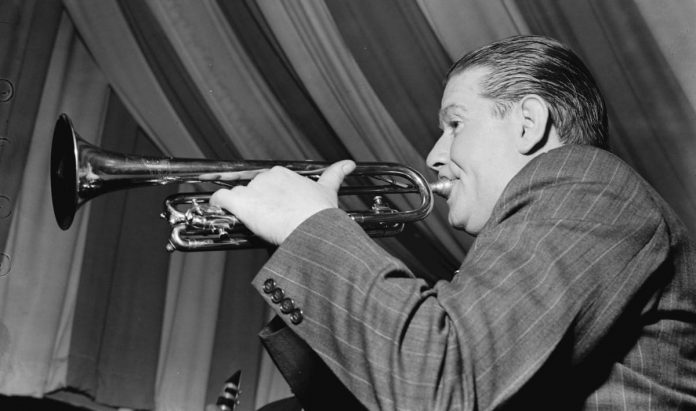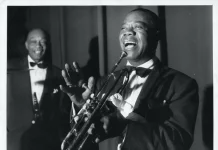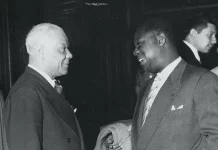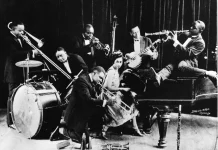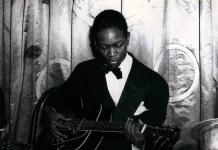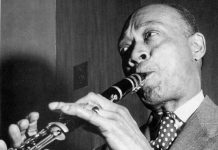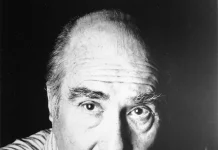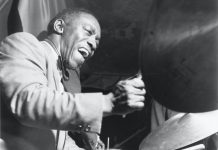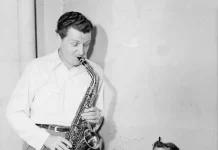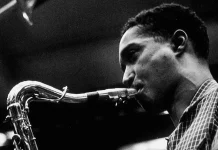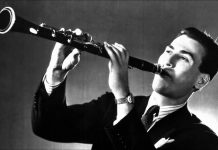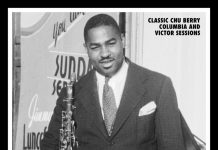He was called “the indestructible Wild Bill”, and when he died at his home in Santa Barbara on 14 November 1989, the Eddie Condon school was finally closed. Bill had been its most palpably colourful manifestation, his pillar-of-fire-in-the-night cornet pleasing Al Capone so much that the gangster went out of his way to make sure that there was always work for Bill in his night clubs. On his death I wrote that, having seen him playing with such fire and energy on tour with Art Hodes in this country the year before, I came to believe that he had done a deal with somebody over the business of living forever.
Wild Bill Davison was a true legend. As schoolboy jazz fans we knew his reputation as the Roman gladiator of jazz, but because in that post-war world Commodore 78s were both expensive and only over there, we had never heard him play. But when we did get to hear That’s A-Plenty and those records of his from November 1943 with Pee Wee, Condon and Brunies the legend came to life and the image of a man ripping a sheet of canvas in half with a cornet was to stay with us ever after in vivid technicolour.
Bill wasn’t a particularly small man, although on the stand it did seem that Edmond Hall towered over him. Have you noticed that, from Bobby Hackett to Ray Nance, cornet players tend to the short side? In fact there was almost a bust up one night when Bill Berry was on the stand and he announced that he was pleased to see that the second greatest cornet player was in the audience that night. Ruby Braff was not amused.
The modern horn is more properly referred to as the trumpet-cornet and its sound is so close that a lot of people can’t tell the difference in the sound from the trumpet when it’s being played.
Not so Duke Ellington, of course, who didn’t need the fact of having Rex Stewart or Ray Nance at his elbow for all those years to make the distinction.
“It was on the car radio,” said Duke. “Somebody was playing this old song I’d forgotten, Black Butterfly.” (Duke wrote it). “Can you imagine, a cornet? Playing good, too, with a string orchestra.”
It was, of course, Wild Bill Davison. (Pretty Wild & With Strings Attached, Arbors ABCD 19175). This is not only one of Bill’s best albums, it is a ballad collection to rank with triumphs in the field such as Ben Webster’s Verve Music For Loving.
“He sure had the right sound. I should have had Rex Stewart play it.”
Bill was widely regarded as an improvising jazz man who didn’t read music. Because he didn’t need to read music didn’t mean that he couldn’t and in his field he was a good reader, at least a match for Ruby Braff. In his youth Bill had worked with disciplined bands. As George Avakian recounts in the Arbors album notes, Bill had a remarkable recording career, appearing on more than 1,100 records for 132 companies. No wonder he had such a huge repertoire and such a good memory for the tunes that he’d played.
Bill arrived late as a Condon musician, after Hackett, Kaminsky, Butterfield and the like, although Eddie had played on all of Bill’s Commodores. Although Condon set the mould for Chicago style bands, none of his successors matured with the sophistication that his did, and Eddie was horrified at the state of his British emulators when he came over here, feeling that time had left them behind with their banjos. Condon’s Dixieland was professional and demanded the highest standards, which is why giants like Teagarden and Hackett found it a joy to play with him.
One of Bill’s early performances on record, and still one of his best, was the outstanding 1946 Improvisation For The March Of Time, with its beautifully arranged introduction a contradiction. (Who did all the fine arranging on Condon’s records?) Bill is in canvas-tearing mood, and Tony Parenti, Brad Gowans, Gene Schroeder are at their finest, no doubt inspired by Dave Tough, who had just arrived with all his innovations for Woody Herman’s First Herd pouring out of him. Condon’s men rode the waves like veterans. It’s on Eddie Condon: Dixieland All-Stars (Decca GRD-637), to be treasured if you can find it.
Bill graced the Eddie Condon jam sessions that Columbia created in parallel to the Buck Clayton jam sessions. These are perhaps more easily available, I suspect, particularly on the Columbia Collectables Classics Eddie Condon Jam Session Coast To Coast/Jammin’ At Condon’s (Sony COL-CD-7526), a double set which has the added delight of half a dozen of the best tracks by the Rampart Street Paraders. Blushingly, Columbia mentions these only on the back cover, but doesn’t say who they are by or give personnels.
Bill was indeed wild throughout most of his life, with him and soul-mate Eddie Condon shifting a couple of bottles of whiskey each in a day by the time they toured England together. Yes, he was wild, but also he wasn’t. He was kind and attentive if you spoke to him, his conversation gliding on the undetectable tide of alcohol which permeated his life.
Bill had many hobbies, was fascinated by antiques and for a time proved adept at turning old trumpets into table lamps. He had an impressive collection of memorabilia from the Second World War and was a skilled radio ham with his own transmitter. One night in a New York bar he noticed a soldier wearing the uniform of a signaller. Bill sang out a message in Morse code. “You can kiss mine, too,” the soldier answered good-humouredly.
The Mob was one of the first American bands to come to England, in 1956, with Condon’s band being eagerly demanded by British fans throughout the country. London was in chaos on its arrival as the Condonians spread across the city, reinforced rather than diluted by members of the Mick Mulligan and Chris Barber bands. At one point his fans asked for Wild Bill and it became apparent that he had disappeared.
“He’s out trying to unscrew Big Ben,” said Condon. “He’s going to take it home and make a lamp out of it.” Later on Bill came to and found himself playing in a band in a huge room. Although he didn’t know it, he was sitting in with the Chris Barber band, which had a gig at the Festival Hall.
Condon’s bassist Leonard Gaskin arose in his hotel one morning and spent several minutes in front of his hotel-room mirror trying to knot his tie. It was only then that he realised that he hadn’t put on his shirt
The calibration of hangovers that week reached highs previously unknown to us. Condon’s bassist Leonard Gaskin arose in his hotel one morning and spent several minutes in front of his hotel-room mirror trying to knot his tie. It was only then that he realised that he hadn’t put on his shirt.
The tour officially began in Glasgow, with Condon sharing the programmes with the Humphrey Lyttelton band. At the end of each concert the bands combined for a mammoth version of Old Miss. As chorus piled on chorus Wild Bill’s cornet and Humph’s trumpet tried to out-blow each other and this nightly jousting led fairly quickly to each man having a distaste for the other. In Old Miss each independently held a long high note over the rest of the group from the penultimate chorus into the last. To be longer and higher than the other, each began delaying starting the note in the hope of outlasting his rival. I don’t know if Bill held a grudge, but certainly Humph remained contemptuous of the American’s playing for the rest of his days.
The metamorphosis wreaked on Bill by Anne Stewart when she came into his life in 1954 to be his fourth wife was grotesque, perhaps the equivalent of Jack Teagarden becoming Al Jolson.
Anne was glamorous and elegant and had been a minor film star during the 30s. Bill fell for her totally and his roaring changed instantly to meek obedience. He was quietly besotted. She took him in hand at a time when a doctor gave him 10 days to live if he didn’t stop drinking. She saw to it that Bill never drank again, give or take “a teensy one” when her back was turned. She proved brilliant at handling his salary, publicity, contracts and travel arrangements and descended like a female Attila the Hun on anyone who might criticise Bill’s playing.
When I began this piece I ordered Avid’s Essential Collection Sidney Bechet (AVC994) because it harboured five of the Bechet-Wild Bill Hodes tracks (there were 35 recorded altogether, but they seem to be otherwise unobtainable). Because of an Amazon delivery man who specialises in wrong destinations, I’ve only just recovered it. I can thoroughly recommend the double album.Three and a half hours of top-class Bechet, avoiding the RCA catalogue and including amongst its delights 10 tracks by the Bechet-Spanier Four.

